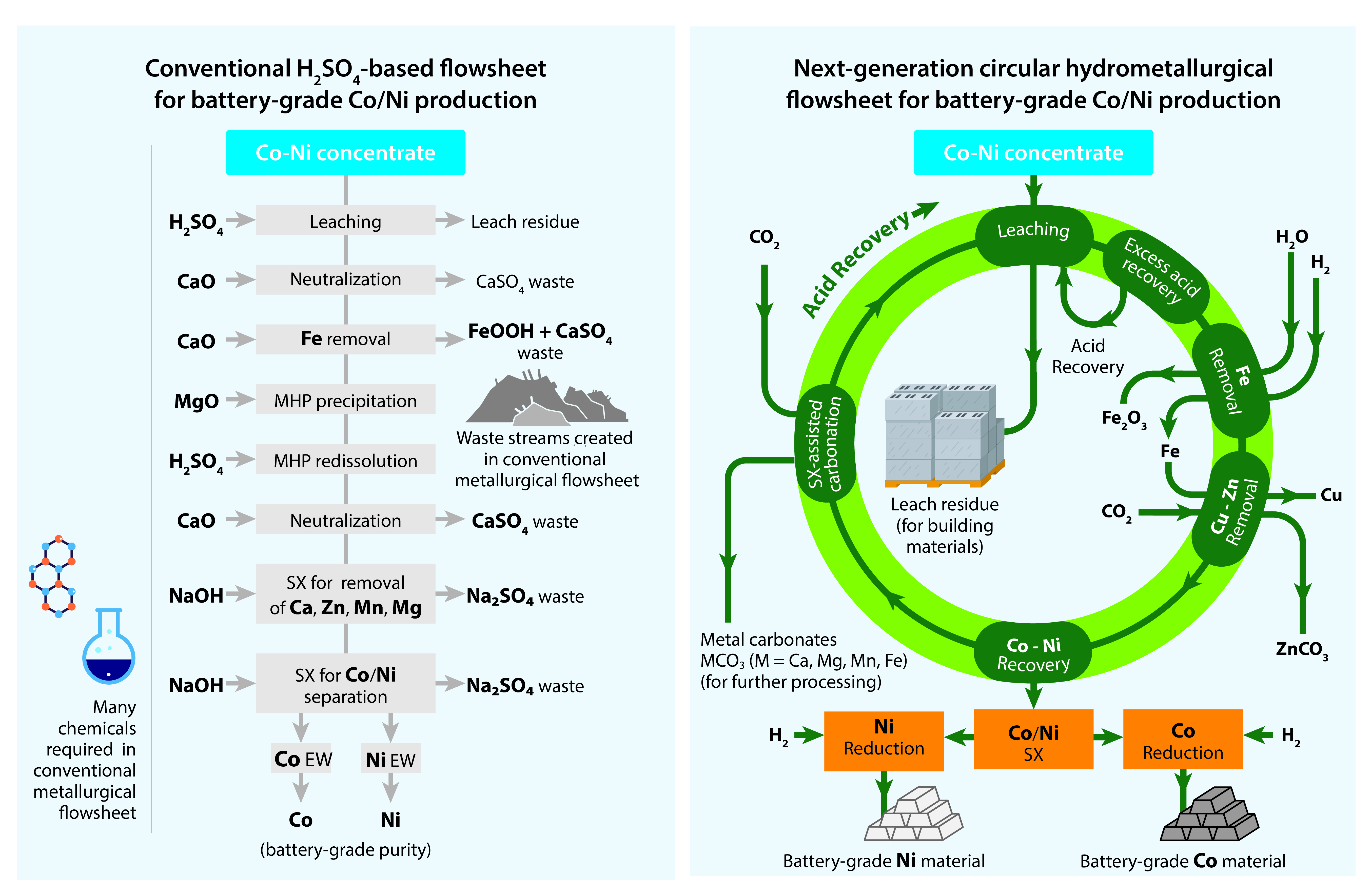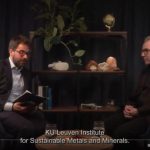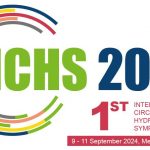The SOLVOMET Group is delighted to announce the publication of its position paper “The Twelve Principles of Circular Hydrometalllurgy” in the Journal of Sustainable Metallurgy. In order to make this paper as relevant as possible for the global hydrometallurgical community, the authors – Prof. Koen Binnemans and Dr. Peter Tom Jones (SOLVOMET Group & KU Leuven Institute for Sustainable Metals and Minerals) – reached out to leading industrial hydrometallurgists from all over the world. As a result of the many in-depth discussions with these industry experts, it became evident once more that there is a looming mismatch in the field of hydrometallurgy between the industrial innovation in the sector on the one hand and the academic (low-TRL) research on the other hand. The authors are convinced that this “Twelve Principles” framework provides a powerful tool to show the direction of future research and innovation in hydrometallurgy, both in industry and in academia. Synergies are what we need. As there can be no green transition without energy-transition metals, the decisive role of both eco-friendly AND cost-effective circular hydrometallurgical flowsheets for the production and refining of lithium, cobalt, nickel, rare earths, copper… cannot be overestimated.
Why this paper?
By and large, conventional hydrometallurgical flowsheets can be described as predominantly “linear,” in the sense that the reagents consumed are not regenerated for subsequent reuse (although there are examples where this is partially the case). This can be problematic because hydrometallurgical processes often give rise to substantial amounts of both solid waste (e.g., gypsum, goethite, or jarosite) and highly saline wastewater. Many hydrometallurgical processes leave a large carbon footprint because producing the reagents used in hydrometallurgy is often energy intensive. Hence, there is room for improvement.
The past 10 years have been blessed with a much greater awareness of environmental issues in the extractive-metallurgy sector. This period has seen the launch of the Journal of Sustainable Metallurgy in 2015 and an acknowledgement that the total environmental impact of a metallurgical process can only be properly evaluated via a lifecycle assessment (LCA) or, better still, via a multicriteria assessment (MCA). Unfortunately, such studies do not provide the metallurgist with practical guidelines as to how to improve the sustainability of a metallurgical flowsheet.
In the area of environmentally friendly chemistry, the Twelve Principles of Green Chemistry have proven their worth in making chemical syntheses safer and greener. However, most of these principles are more closely associated with the synthesis of organic compounds and are not relevant to extractive metallurgy. The Twelve Principles of Green Chemistry were reformulated for engineering practice as the Twelve Principles of Green Engineering, and the Nine Principles of Green Engineering of the Sandestin Declaration. Although some of these principles can be applied to extractive metallurgy, many others are less relevant because they were devised for manufacturing.
At present, it is fair to say that such guidelines for extractive metallurgy are lacking. For this reason, we decided to formulate a set of design principles adapted to the field of hydrometallurgy that we hope will spur the development of more sustainable hydrometallurgical processes. These guidelines contribute to the targets of Goal 12 of the United Nations Sustainable Development Goals: Ensure sustainable consumption and production patterns.
What is Circular Hydrometallurgy?
Circular hydrometallurgy relates to the design of energy-efficient and resource-efficient flowsheets or unit processes that consume a minimum of reagents and produce as minimum waste as possible. “Circularity” refers to the regeneration and reuse of all the waste-generating reagents from the process.
This not only includes the acids or bases used for leaching and pH control, but also any reducing agents, oxidizing agents, and other auxiliary reagents. In addition to minimizing the consumption of chemical reagents, the consumption of water must also be reduced. Ideally, there should be no net consumption of reagents and no net consumption of water, except for some evaporative losses. Obviously, “zero waste” is the ideal situation, but it will never be achievable in practice.
The Twelve Principles of Circular Hydrometallurgy are…
(1) regenerate reagents; (2) close water loops, (3) prevent waste, (4) maximize mass, energy, space, and time efficiency, (5) integrate materials and energy flows, (6) safely dispose of potentially harmful elements, (7) decrease activation energy, (8) electrify processes wherever possible, (9) use benign chemicals, (10) reduce chemical diversity, (11) implement real-time analysis and digital process control, and (12) combine circular hydrometallurgy with zero-waste mining.
Abstract of paper
In this academic position paper, we propose the 12 Principles of a novel and more sustainable approach to hydrometallurgy that we call “circular hydrometallurgy.” The paper intends to set a basis for identifying future areas of research in the field of hydrometallurgy, while providing a “sustainability” benchmark for assessing existing processes and technological developments. Circular hydrometallurgy refers to the designing of energy-efficient and resource-efficient flowsheets or unit processes that consume the minimum quantities of reagents and result in minimum waste. The application of a circular approach involves new ways of thinking about how hydrometallurgy is applied for both primary and secondary resources. In either case, the emphasis must be on the regeneration and reuse of every reagent in the process. This refers not only to the acids and bases employed for leaching or pH control, but also any reducing agents, oxidizing agents, and other auxiliary reagents. Likewise, the consumption of water and energy must be reduced to an absolute minimum.
To consolidate the concept of circular hydrometallurgical flowsheets, we present the 12 Principles that will boost sustainability: (1) regenerate reagents, (2) close water loops, (3) prevent waste, (4) maximize mass, energy, space, and time efficiency, (5) integrate materials and energy flows, (6) safely dispose of potentially harmful elements, (7) decrease activation energy, (8) electrify processes wherever possible, (9) use benign chemicals, (10) reduce chemical diversity, (11) implement real-time analysis and digital process control, and (12) combine circular hydrometallurgy with zero-waste mining. Although we realize that the choice of these principles is somewhat arbitrary and that other principles could be imagined or some principles could be merged, we are nevertheless convinced that the present framework of these 12 Principles, as put forward in this position paper, provides a powerful tool to show the direction of future research and innovation in hydrometallurgy, both in industry and in academia.
Full reference of paper
Koen Binnemans & Peter Tom Jones, The Twelve Principles of Circular Hydrometallurgy, Journal of Sustainable Metallurgy, https://doi.org/10.1007/s40831-022-00636-3. Open Access PDF Download: https://rdcu.be/c1Iel
Acknowledgements
The authors thank the Industrial Research Fund (IOF) and the LRD Division RARE³ of KU Leuven for financial support. For this paper, the authors had numerous discussions with industry experts (including Rene Wiersma, Charles Geenen, Mark Saxon, Justin Salminen, Jo Vandenbroucke, Mohammad Khoshkhoo, Jan Luyten, Joris Roosen) who provided valuable feedback on the first draft of this manuscript. The authors are also indebted to particular SOLVOMET researchers (Rayco Lommelen, Willem Vereycken, Brecht Dewulf, Dzenita Avdibegovic, Stijn Raiguel, Thomas Abo Atia, Lieven Machiels) for their much-appreciated inputs and suggestions. The authors acknowledge Paul McGuiness for the text editing and the layouting/redrawing of the figures.

Example of a linear versus a circular hydrometallurgical flowsheet





